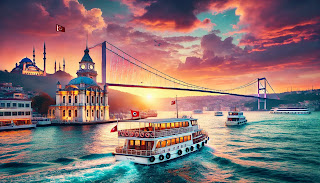Welcome To Mecca
Mecca (Makkah), located in Saudi Arabia, is one of the holiest cities in Islam. It holds profound religious significance and serves as a spiritual center for Muslims worldwide. Key highlights about Mecca include: Religious Importance: The Kaaba: The Kaaba, located in the Masjid al-Haram, is the most sacred site in Islam. Muslims face the Kaaba during their daily prayers (Salah). The Hajj: Mecca is the destination for Hajj, one of the Five Pillars of Islam. Every able-bodied Muslim who can afford it must perform this pilgrimage at least once in their lifetime. Umrah: Unlike Hajj, which has specific dates, Umrah can be performed at any time of the year and involves visiting Mecca and performing certain rituals. Key Locations: Masjid al-Haram (The Sacred Mosque): This is the largest mosque in the world, encircling the Kaaba. It can accommodate millions of worshippers. Mina: Known as the "City of Tents," it hosts pilgrims during Hajj for specific rituals. Mount Arafat: The site of the Hajj ritual known as "Wuquf," where pilgrims gather for prayers. Jabal al-Nour: This mountain houses the Hira Cave, where Prophet Muhammad (PBUH) received his first revelation. Geography and Climate: Mecca is located in the Hejazi region of Saudi Arabia, surrounded by arid mountains. The climate is desert-like, with high temperatures, especially in summer, and minimal rainfall. Accessibility: Mecca is not open to non-Muslims, as it is a holy city exclusively for Muslims. Pilgrims usually arrive through King Abdulaziz International Airport in Jeddah or Taif Regional Airport. Let me know if you’d like more details about any specific aspect of Mecca!
Here are the top 5 significant places in Mecca, Saudi Arabia:
1. Masjid al-Haram (The Sacred Mosque) Significance: It houses the Kaaba, the holiest site in Islam. Muslims perform Tawaf (circumambulation) around the Kaaba during Hajj and Umrah. Highlights: Zamzam Well, providing sacred water. The Black Stone embedded in the Kaaba. Capacity to accommodate millions of worshippers.
2. Jabal al-Nour (Mountain of Light) Significance: Home to the Hira Cave, where Prophet Muhammad (PBUH) received the first revelation of the Quran from Angel Jibreel (Gabriel). Highlights: A spiritual site for pilgrims and history enthusiasts. The climb is steep but rewarding for its historical and religious significance.
3. Jabal Thawr (Thawr Mountain) Significance: Known for the Thawr Cave, where Prophet Muhammad (PBUH) and Abu Bakr sought refuge during their migration (Hijra) to Medina. Highlights: The cave symbolizes trust in Allah and resilience.
4. Mina (The Tent City) Significance: Central to the Hajj pilgrimage, Mina hosts millions of pilgrims who perform the ritual of Ramy al-Jamarat (stoning of the devil). Highlights: Over 100,000 air-conditioned tents used for accommodating pilgrims during Hajj.
5. Mount Arafat Significance: The site of the pivotal Wuquf (standing) ritual during Hajj, where pilgrims gather for prayers and reflection. Highlights: Known as the "Mount of Mercy," it is associated with Prophet Muhammad's (PBUH) Farewell Sermon. Each of these places carries immense spiritual and historical importance, making them must-visit sites for Muslims during Hajj or Umrah.


































